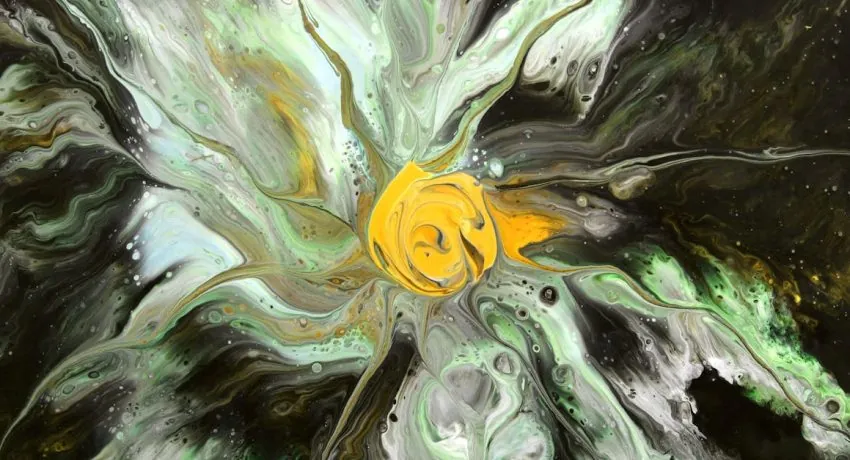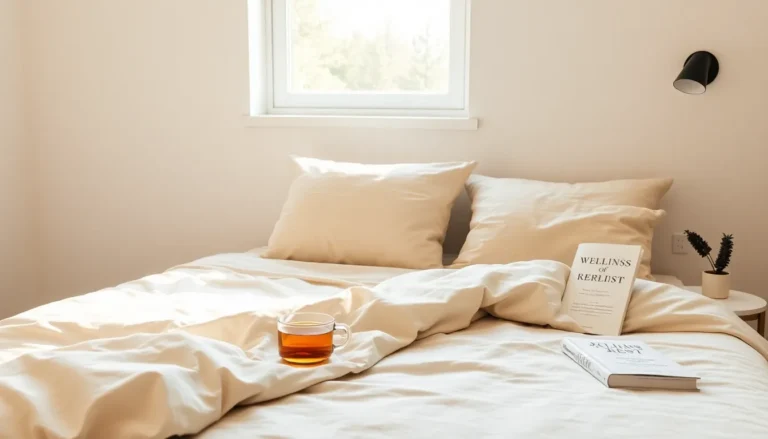Table of Contents
ToggleIn a world where neutrals reign supreme, bold color integration is the rebellious cousin everyone secretly admires. It’s like adding a splash of hot sauce to a bland dish—suddenly, everything’s more exciting. Imagine transforming a dull space into a vibrant haven that sparks joy and creativity. When done right, bold colors can elevate any environment, making it feel fresh and alive.
Understanding Bold Color Integration
Bold color integration refers to the strategic use of vibrant hues within spaces primarily featuring neutral tones. This approach enhances visual appeal and creates a more dynamic atmosphere.
Definition and Importance
Bold color integration involves incorporating bright, vivid colors into a design scheme. This integration serves multiple purposes, such as creating focal points and influencing moods. Colors like deep reds, vibrant blues, and lively yellows can energize a room. Bringing these colors into play allows for personal expression and can transform any environment. As research shows, well-placed bold colors can increase creativity and promote a sense of warmth, making spaces more inviting.
Historical Context
The use of bold colors in design dates back centuries. Ancient cultures, such as the Egyptians, utilized striking color palettes to reflect their values and beliefs. In the 20th century, artists and designers embraced bold colors as a form of rebellion against traditional aesthetics. Movements like Fauvism and Modernism celebrated the emotional impact of color. Today, bold color integration continues to influence contemporary design, shaping spaces that reflect individual tastes while fostering a sense of joy and creativity.
Techniques for Bold Color Integration
Bold color integration enhances visual interest and creates dynamic atmospheres. Various techniques support this process, allowing for effective and appealing applications.
Color Theory Principles
Understanding color theory is essential for successful bold color integration. Primary colors—red, blue, and yellow—serve as foundation points for mixing secondary colors like green, orange, and purple. Complementary colors, positioned opposite each other on the color wheel, create striking contrasts that capture attention. Analogous colors, found next to each other, generate harmony and a cohesive look. Utilizing these principles guides choices toward aesthetically pleasing combinations. Establishing a balanced palette ensures vibrant colors enhance rather than overwhelm a space.
Practical Application Tips
Selecting the right areas for bold colors is crucial. Accent walls provide impactful statements without dominating the entire room. Accessories such as cushions or artwork can introduce vibrant hues gradually. When working with smaller spaces, pairing bold colors with light neutrals maximizes the effect while maintaining openness. It’s important to anchor bold colors with grounding elements, like furniture in subdued tones. Changing light conditions also affect bold colors; therefore, test paint swatches in natural and artificial light for the best outcome. Consistently applying these practical tips fosters personal expression while enhancing the overall design.
Benefits of Bold Color Integration
Incorporating bold colors into design enhances aesthetic appeal and overall atmosphere. This approach generates numerous benefits, influencing both visual experiences and emotional responses.
Visual Impact
Bold colors significantly draw attention and create focal points within a space. Lively hues contrast effectively against muted tones, ensuring they stand out. Vibrant colors can transform a room, evoking excitement and interest. Accessories, artwork, or accent walls infused with striking shades introduce dynamic elements to interiors. When used thoughtfully, bold colors enhance dimension and depth, leading to visually stimulating environments. Effective integration can elevate mundane spaces into engaging ones, encouraging exploration and creativity.
Emotional Response
The strategic use of vibrant colors influences mood and emotional wellbeing. Bright reds may evoke feelings of passion and warmth, while deep blues provide calmness and tranquility. Colors often carry psychological weight, affecting how individuals interact with their surroundings. Lively yellows promote happiness and energy, fostering a cheerful atmosphere. Implementing bold colors taps into personal expression, allowing individuals to reflect their styles and values. Spaces enriched with vibrant colors create inviting environments that support emotional connection and fulfillment.
Challenges in Bold Color Integration
Incorporating bold colors into design poses several challenges. Effective integration requires careful consideration to avoid overwhelming a space.
Common Mistakes
Using too many bold colors often disrupts visual harmony. Many designers pair vibrant hues without considering balance. Ignoring proportions can lead to an uninviting atmosphere. Failing to use color theory results in ineffective combinations. Overlooking lighting conditions also diminishes the intended effect of colors, changing their appearance significantly throughout the day. Recognizing these pitfalls helps in executing successful bold color integration.
Solutions and Alternatives
Utilizing a limited palette helps maintain cohesion. Anchoring bold colors with soft neutrals creates a balanced visual appeal. Testing paint swatches in natural light reveals their impact better. Applying color theory techniques ensures effective use of complementary hues. Choosing one or two focal points for bold colors allows their vibrancy to shine. Employing accessories or artwork as vibrant accents prevents color overload, fostering a cohesive design. Adopting these solutions enhances the overall effectiveness of bold color integration in any space.
Bold color integration isn’t just a design choice; it’s a way to transform spaces into vibrant reflections of personality and emotion. By strategically incorporating vibrant hues, individuals can create environments that energize and inspire. The thoughtful application of color can elevate the aesthetic appeal of any room while fostering emotional connections.
Embracing bold colors encourages creativity and personal expression. With the right techniques and an understanding of color theory, anyone can navigate the challenges of bold color integration. The result is a harmonious balance that enhances the overall atmosphere, making spaces not only visually appealing but also inviting and uplifting.




